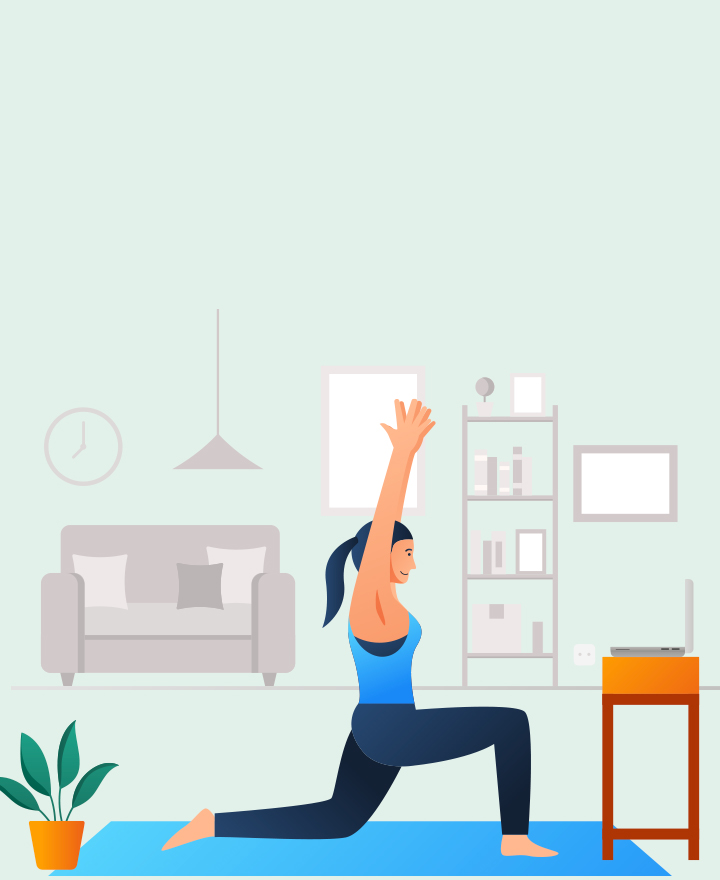

How to do a pull-up?
Pull-up is an ideal workout for those looking to build their upper body strength. However, the exercise can be challenging for beginners and requires practice, patience and commitment. It is also important to know the correct way to do a pull-up and put in some extra effort to work your way up. If you are keen to learn this workout, our step-by-step instructions can help. Read on to learn how to do pull-ups the right way to strengthen your upper body and avoid injuries.
The pull-up exercise is one of the best forms of upper body workout. From training your biceps and back to boosting core strength and improving bone density, pull-ups can do them all. The exercise can also increase flexibility, improve posture and help you burn calories. So, if you are a fitness enthusiast looking to improve your upper body strength and overall fitness, the pull-up exercise is a wonderful option. Although the workout looks fairly easy, it can be tricky for beginners or people with a weak upper body. However, knowing how to do a pull-up correctly and practising it regularly can help.
Steps to perform a Pull-up
The following are the steps to do a pull-up correctly:
1. Stand below a pull-up bar and place your hands on it. Grip the bar tight with your knuckles pointing up. Keep your hands shoulder-width apart.
2. Take a few deep breaths and stick your chest out.
3. Curve your back a bit so that the elbows point to the ground. Now, lift your feet from the floor to hang from the bar.
4. Tighten the muscles in your core; now, slowly pull yourself up.
5. Once the bar is at your chest level, breathe out and lower your body slowly to the starting position. You can do more reps the same way.
Tips to perform a Pull-up
• Take at least 2 minutes of rest between each rep to avoid exertion and injury.
• Do the full range of motion (ROM) or complete each rep properly for maximum benefits. Do not go halfway up and come down.
• Do not grip the bar too wide.
• Do not lower your body quickly or with a jerk. Come back to the starting position slowly.
Conclusion
If you are looking to take your fitness quotient to the next level, pull-up exercise is a great option. However, do not exert yourself at any point; avoid this exercise if you have any upper-body injury. Also, if you find it difficult to do pull-ups on your own, take the help of a trainer for some days and learn to do it the right way to avoid injuries. It is also wise to keep health insurance handy for medical emergencies. If you get injured or require hospitalisation due to a medical condition, your healthcare plan will cover the treatment bills and help you keep your savings intact.
One of the important components of our overall wellness is also being financially secured. Healthcare emergencies can happen any time, but a good health insurance policy can protect you from such uncertain situations. To know more about Wellness and other health related tips, visit the wellness corner.
Source: cnet.com, thegravgear.com, nerdfitness.com, stridestrong.com
Disclaimer: This blog provides general information and discussions about health and related subjects. The information and other content provided in this blog, website or any linked materials are not intended and should not be considered or used as a substitute for medical advice, diagnosis or treatment. Kindly contact your doctor before starting a new medicine or health regime.
Related Articles
Best Exercises to Increase Core Strength
6 Step Aerobics Routines to Do at Home
8 Cardio Exercises that You Should Try at Home
Here’s How You Can Exercise With Household Items
7 Tips to Get Your Full Body Workout at Home
Published on January 29, 2024














 Health Insurance
Health Insurance  Travel Insurance
Travel Insurance  Car Insurance
Car Insurance  Cyber Insurance
Cyber Insurance  Critical Illness Insurance
Critical Illness Insurance
 Pet Insurance
Pet Insurance
 Bike/Two Wheeler Insurance
Bike/Two Wheeler Insurance  Home Insurance
Home Insurance  Third Party Vehicle Ins.
Third Party Vehicle Ins.  Tractor Insurance
Tractor Insurance  Goods Carrying Vehicle Ins.
Goods Carrying Vehicle Ins.  Passenger Carrying Vehicle Ins.
Passenger Carrying Vehicle Ins.  Compulsory Personal Accident Insurance
Compulsory Personal Accident Insurance  Travel Insurance
Travel Insurance  Rural
Rural